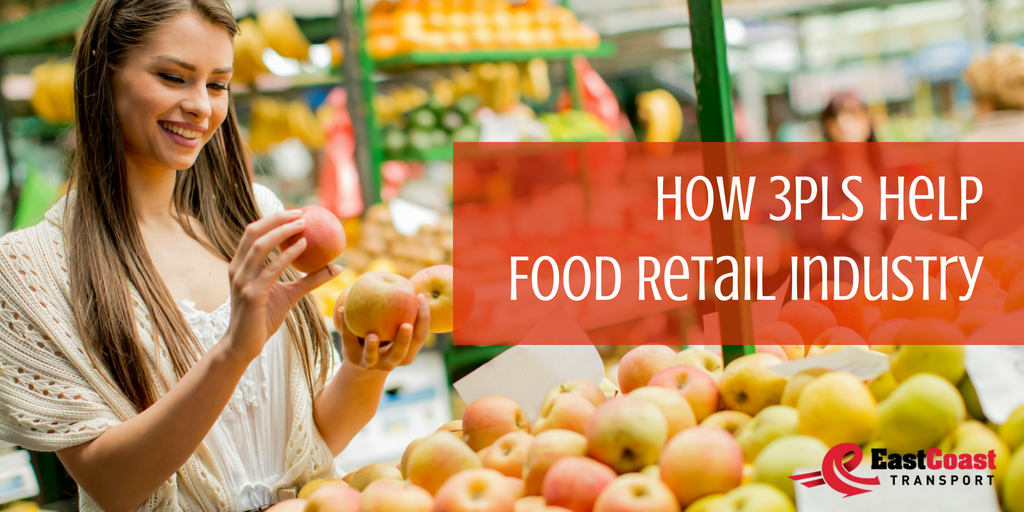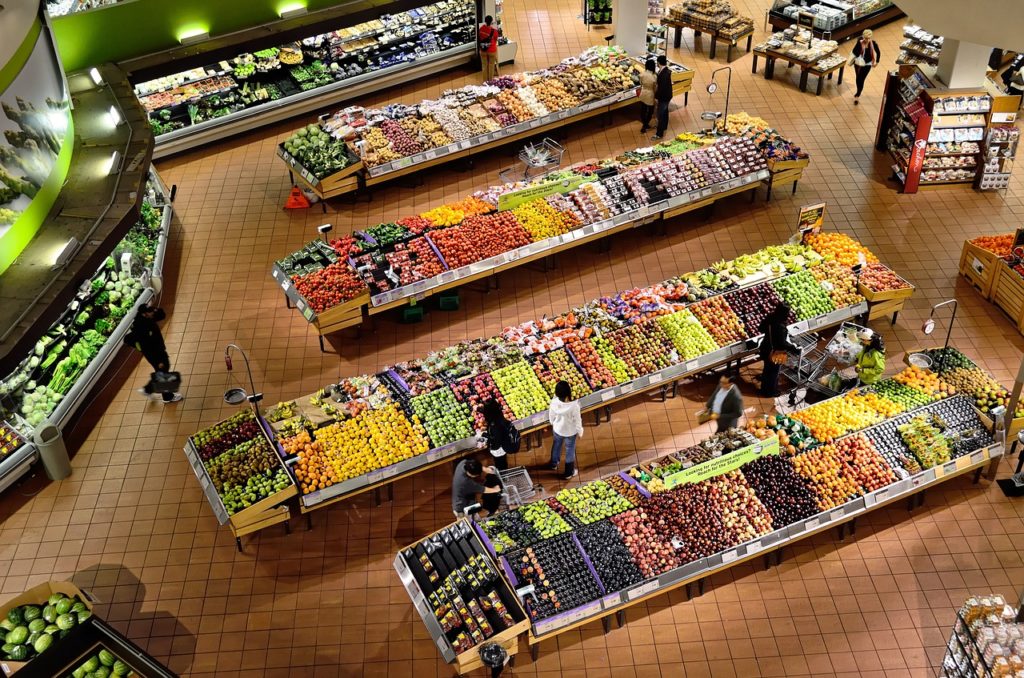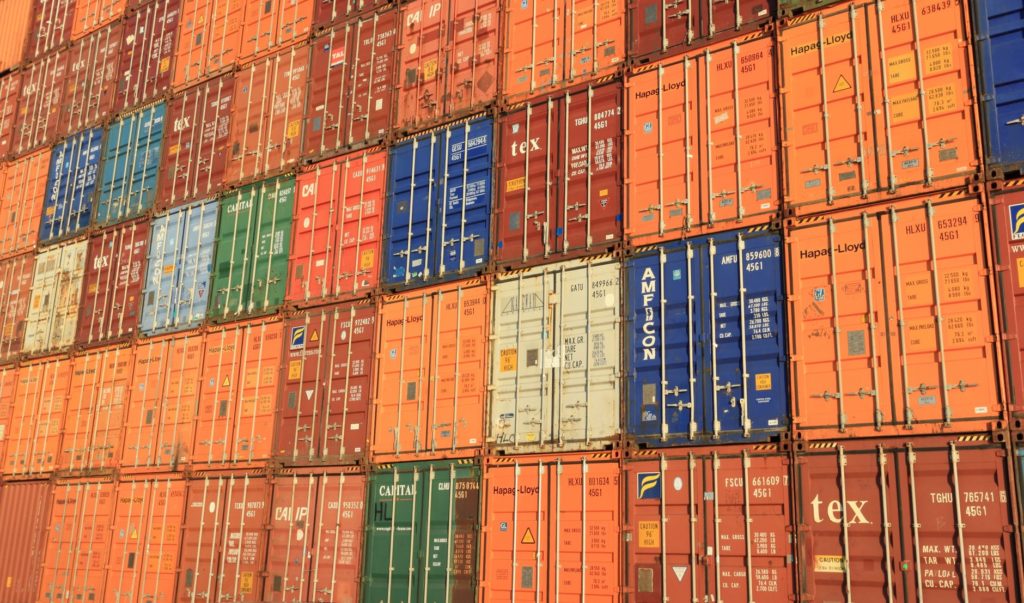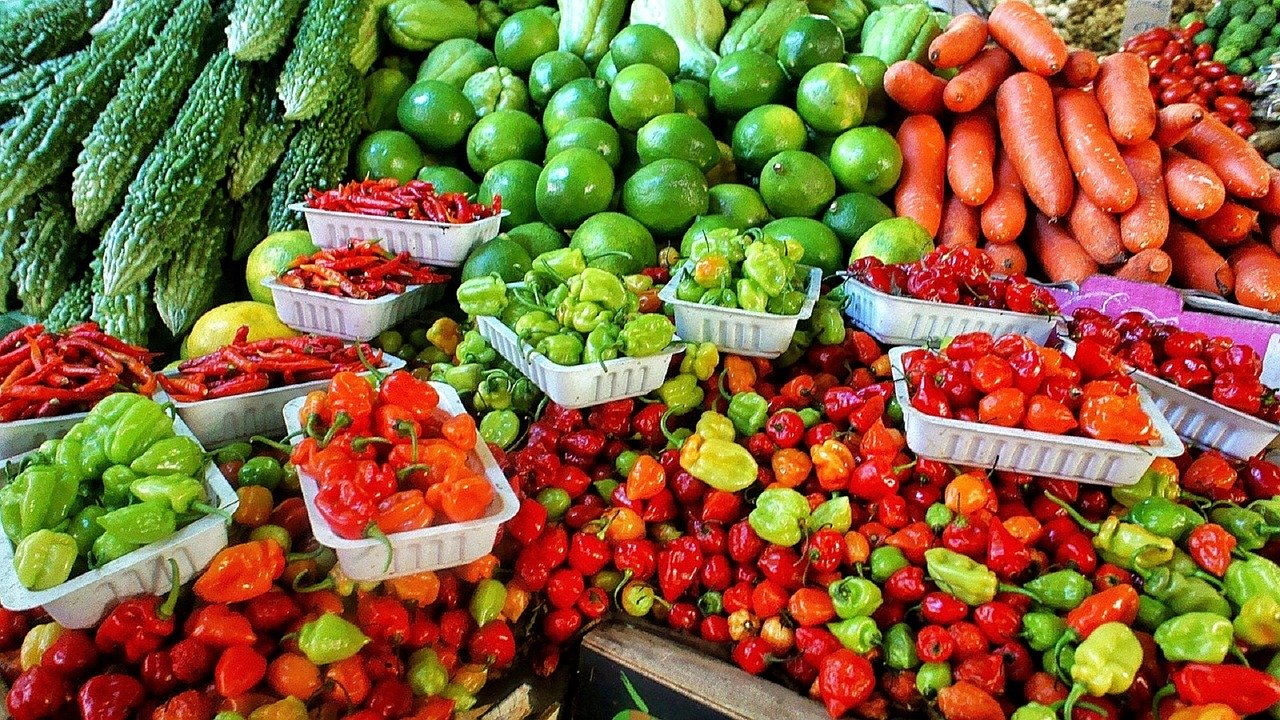Special times call for special measures, and COVID-19 has challenged businesses to change their processes both for public health reasons and also to stay competitive. In the food distribution industry, many companies have found the solution by improving safety with 3PL. Read on to find out why improving safety with 3PL is so effective in the food supply chain, and why those companies will never go back.
How Food Distribution Companies are Switching to 3PL Providers
Improving safety with 3PL food logistics has been an industry-saving move by food distributors. The pandemic has turned the normally stable food supply chain on its head, shifting demand from restaurants to grocery stores in an instant. All parties in the food supply chain have been reeling. There have been enormous bottlenecks of product and plant closures, and all parties are scrambling to adapt to changes in how they store, package, handle, and transport food. This complexity requires expertise and resources that 2PL alone cannot deliver. Food distributors have saved their businesses and served public health by improving safety with 3PL food logistics providers.
Factors Changing the Landscape: Amazon, Meal Kits
Amazon has the largest market share of online grocery sales in the US as of June 2022 which makes it the leading online retail eCommerce company in the country. Amazon gained hundreds of brick-and-mortar stores nationwide and a robust network of conditioned facilities when they acquired Whole Foods. This allows Amazon to position its products as close to the end-consumer as possible and have fulfillment centers for Amazon Fresh subscription service around the country. This combination of infrastructure and resources supports the new reality of the e-commerce business model, which is characterized by higher frequency shipments of lower volumes of product, as opposed to the traditional retail model of high volume shipments at lower frequencies.
Meal kits represent another threat and opportunity in the food logistics space. The meal kits industry has skyrocketed in recent years and is estimated to grow to approximately $11.6 billion by 2023. The bottom line is that traditional brick and mortar food retailers of our childhoods are presented with more challenges than ever.

How 3PLs Help Food Retail Industry?
Logistics has become a critical organizational piece for businesses. Supply chain efficiency can make or break a company’s success. To get a leg up on the competition, logistics leaders should seek a 3PL like East Coast Transport that can utilize the following tactics to accommodate their needs in this changing and competitive marketplace:
- Assisting suppliers with meeting the stringent and costly compliance requirements of large retailers such as Walmart and Target
- 3PLs that use technology solutions to provide real-time tracking, business intelligence, and strategic insights. Working with a 3PL, a shipper can gain immediate access to technology with little- to no-cost and much shorter implementation.
- 3PLs offer exceptional flexibility, agility and provide access to capacity that can exceed that of asset-based providers
3PLs, like East Coast Transport, are developing technology and methods to automate freight quoting, tracking, and servicing, which in turn drives value for shippers and carriers through improved accuracy, enhanced service, and increased shipment velocity. When food retailers are working in tandem with a formidable 3PL, they are equipped to survive changes in the marketplace and continue to compete, grow and thrive.
How The Food Supply Chain Has Been Disrupted During COVID-19

Increasing Demand for Staple Items
The emphasis on health had driven the tremendous uptick in fresh fruit and vegetable produce purchases. On March 1, 2020, sales of fresh produce in grocery stores was on par with that seen in 2019. However, by the end of the week of March 15, sales had increased by an unprecedented 33.9% with no end to the growth in sight, according to market research company IRI. In particular, potatoes, berries, and onions have seen meteoric rises in demand with sales increasing by 114%, 23.5%, and 68%, respectively. In the US, packaged fresh produce had become popular due to the added convenience and consumers’ beliefs that other customers who could be carrying Covid-19 will not have touched the end product. Covid-19 had also caused a change in milk-buying habits with an astonishing 305.5% increase in oat milk sales during just over a one-week period in April! Consumers had also been driven to purchase more eggs which had caused wholesale egg prices to triple and consumer prices to rise by an average of 94 cents from the base average of $3.01. The price of garlic had also increased by 29% compared to February as demand from Asia had soared. The strain from increased demand for fresh produce from grocery stores had caused the national food supply chain to pivot.
Pivoting the Supply Chain to Fulfill Grocery Store Orders vs. Restaurants
The restaurant industry had taken one of the largest hits during pandemics. Over 3 million jobs had been lost and sales have declined by $25 billion according to the National Restaurant Association. Many restaurants had closed their doors for both the safety of their patrons and that of their employees. This massive decrease in demand from restaurants has led suppliers and distributors to divert food to grocery stores. Still, grocery purchases cannot totally make up for the decreased restaurant food purchases and losses to the food supply chain had been estimated to be $1 billion per week despite transport and logistics companies doing their best to pivot resources. Some restaurants had tried to remain open for curbside pick-up and delivery, but with sales lower than ever, the existing bulk supply of ingredients is just too much. Much of the food goes to waste. Additionally, restaurants began to consider new ways to bring in more customers. Now, many restaurants and even chain restaurants are selling the ingredients to make their food, brought to them by the transport and logistics company that usually delivers bulk fresh produce so that they can serve cooked food to people. This shifting in the food supply had left the bulk transportation and logistics industry reeling. Normally, approximately 25 percent of the US’s food is diverted to restaurants and food service while the remaining 75 percent goes to retail and grocery stores. Orders of certain products had sharply declined in restaurants like whole chickens, butter, cheese, and ham. Meanwhile, those consumers had been rushing to get those items in grocery stores. All in all, the grocery supply chain is having to adapt more quickly and in ways never seen before.
Covid-19 Effect on Food Production Plants
Covid-19 had placed a huge strain on food production plants, especially meat production plants. Plants had large numbers of employees in often crowded conditions, leading them to be hotspots for infection. Some plants had shut down in order to get infections under control and stop the spread of the virus between employees. According to the Associated Press, 25% of U.S. meatpacking plants were closed in the last two weeks of April alone. Other food and beverage plants were adapting to the times of Covid-19 by increasing plant workers’ pay, sending non-plant floor employees to work remotely, and reducing the number of SKUs produced in order to increase the output of fewer products. Plants were also switching more production resources from food service to retail as well as restricting visitors allowed into their facilities.
What to Expect from your Transport and Logistics Company Post-Pandemic?
As a pandemic, Covid-19 had affected the supply and demand of products all over the world which means that transport and logistics companies’ networks were being put to the test. Transport and logistics companies were on the front lines of the pandemic, ensuring the supply chain remains intact and consumers get the food they need. Workers in the agriculture and food as well as transportation and logistics industries had been deemed essential. This means that ports and trucking had remained open and operational despite shelter-in-place orders. Even so, some functions had come to a halt or have altered capacity. In the coming months, customers will need to have the same kind of flexibility the transport and logistics companies have had. Customers are advised to create an open dialogue with their suppliers and transport and logistics companies to understand where the weak points in their supply chain are. Additionally, customers should ask their 3PL food logistics service provider to start dual sourcing including bringing two or more manufacturers or carriers on board so that they can react quickly to any disruptions. Contact East Coast Transport LLC today to work with a transport and logistics company that can help you analyze, pivot, and improve your supply chain. ECT will use its unlimited resources to get your product to your customers on time, every time.
How 3PL can work to Keep Drivers Safe and Trucks Clean
During this difficult time for businesses and consumers, the top priority is the safety of the essential personnel who work to bring food to the public and the safety of consumers themselves. Food distributors have been protecting drivers by improving safety with 3PL services. Here are some of the ways 3PLs keep drivers safe:
- Follow government protocols
- Practice social distancing
- Wear proper equipment: gloves and mask
- Monitor and keep sick workers home
- Clean and disinfect facilities and trucks
- Keep visitors and non-essential personnel away
- Carry proper documents as essential workers
Improving safety with 3PL food logistics is not just about driver safety. Cleaning trucks and following safety regulations are just as important to keep the food free of contamination so that it is undamaged and safe for public consumption. 3PLs use these methods to improve the safety and cleanliness of trucks:
- Track and regulate the temperature of trucks
- Disinfect trucks more regularly and thoroughly
- Know and follow safety regulations
- Review and monitor wash tickets
- Prevent cross-contamination/ no mixed loads for allergens
Maintaining Food Safety In 3PLs Logistics

Nowadays, consumers concerned with food safety have a growing interest in not only knowing where their food originated but also the process by which it arrived at the store and ultimately in their homes or businesses. Harnessing that process can be complicated, as each producer, manufacturer, packager, and retailer operates using a different set of systems to track products as they move from one entity to another.
This can be problematic. For instance, discrepancies between tracking systems can make it difficult to isolate the provenance of food-borne illness or contamination and make it nearly impossible to isolate products that may contribute to the spread of those diseases. Or similarly, inconsistencies in tracking information can inadvertently hide fraudulent activity or inappropriate labeling. Such instances can have a significant impact on the safety and reliability of food products as they move from farm to table.
However, the rate of these unfortunate incidents can be dramatically reduced by implementing a food safety logistics plan that seeks to reduce the spread of contaminants in the supply chain.
Food Safety Logistics Solution 1: Blockchain Network
One solution is to implement a blockchain network. In essence, a blockchain offers the network of entities within the supply chain a unified set of systems and transactions that bolsters trust and cooperation among the parties while also protecting their individual interests.
Blockchains can be a solution to ensuring food safety because it enables each link in the supply chain to trust that the food products received from the previous link have been subjected to a specific process. The data relating to each of these transactions is easily uploaded and accessed through the blockchain and different entities along the supply chain no longer have to sort through piles of paperwork to locate product information related to a particular product at a particular time. This accessibility grants anyone within the supply chain the ability to ensure compliance with the agreed-upon processes and also encourages accountability among each entity. Furthermore, the simplified tracking software allows producers, manufacturers, and retailers to identify and isolate mistakes made as the product makes its way along the supply chain.
While not every corporation operating within a supply will have the resources to implement a blockchain system within their supply chain, there are other precautions that can be taken to offset the risks of food-related illnesses.
Food Safety Logistics Solution 2: It’s All About the Equipment
For example, shipping pallets and other transportation equipment can be full of chemicals or residues left over from previous shipments, which can be transferred to food products over time if they aren’t properly cleaned between uses. Sanitizing pallets between uses or using different shipping equipment between trips can prevent the transfer of contaminants between products. To facilitate the sanitation process, companies should invest in pallets that can be easily cleaned and are made of materials that will prevent the absorption of contaminating agents.
Food Safety Logistics Solution 3: Certification Programs
Consumer trust can also be promoted by encouraging supply chains to carry out compliance programs at various stages throughout production. While the government sets the minimum standards that the supply chain must meet to comply with food safety regulations, companies can raise the minimum benchmarks to ensure stricter oversight over the food that passes through the supply chain. Organizations, such as the Global Food Safety Initiative, collaborate with food producers, transporters, retailers and manufacturers across the country to design various certification programs aimed at improving and advancing food safety. Operating in compliance with one or more of these certification programs can decrease the likelihood of food contamination in the supply chain.
Ensuring food safety can be a daunting and even complicated task, but implementing the right processes can ease the burden, therefore benefiting consumers by promising safer products and protecting a company’s reputation.
How 3PL Maximizes Truck Use
As food distribution companies are improving safety with 3PL, they recognize a secondary benefit: maximizing truck use. Because 3PLs have vast networks of carriers with specialized equipment, they can meet real-time demand and at the same time maximize truck use by optimizing routes, consolidating loads, and using data analysis and technology for real-time tracking. Without the resources of a 3PL, companies are left to struggle to rebalance routes and use trucks efficiently. Companies are using transportation assets more wisely and improving safety with 3PL.
How Food Distributors are Moving to more Flexible Business Models
Improving safety with 3PL has been critical for food distributors, but the problems facing them during COVID-19 are much more complex. The main reason food distributors have turned to 3PLs is their need for more flexible business models. Food distributors have needed to change the ways they store, handle, package, and transport food. They’ve needed to change routes, carriers, and safety protocols. Whether some of these changes will be permanent or temporary is up in the air as the course of the pandemic and politics is evolving. Simply put, food distributors have had no choice but to adopt more flexible business models, and they are gaining the necessary resources and expertise as well as improving safety with 3PL food logistics providers.
How Data Analysis Improves Food Distribution
Especially with the new demands of the pandemic, meticulous tracking of data, using real-time technology for real-time problems, is critical. And that data must be analyzed by parties that have the experience and resources to implement changes based on that data.
- Which routes are the most efficient?
- How are the drivers and equipment performing?
- Are proper temperatures being reached and maintained?
- What packaging and handling methods result in less damage to goods?
These are all questions that should be asked and answered using data analysis, and that’s why many food distributors are streamlining their operations while improving safety with 3PL. What’s at stake? Staying in business. The safety of all of the workers and the public. Fortunately, food distributors have been successful at optimizing supply chain management and improving safety with 3PL logistics partners through improved data tracking and analysis.
Why choose ECT as your Food Distribution 3pl Provider
Now more than ever, experience, resources and industry-specific knowledge are king when it comes to choosing a 3PL. At East Coast Transportation, our team has many decades of experience serving the food and beverage industry as well as specialized equipment, state-of-the-art technology, and vast networks of carriers to help you with navigating the new challenges of the industry and improving safety with 3PL. Contact us today.

